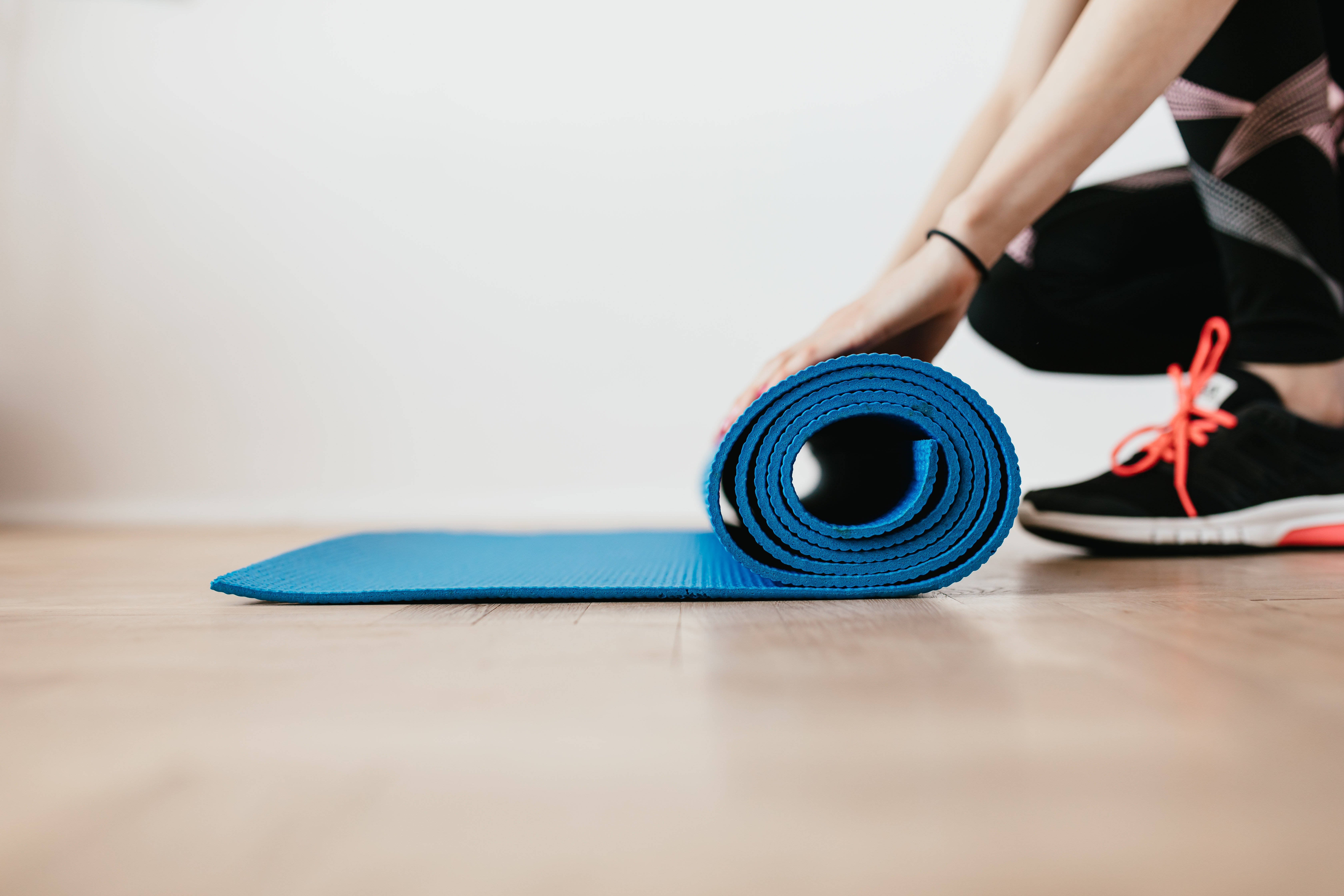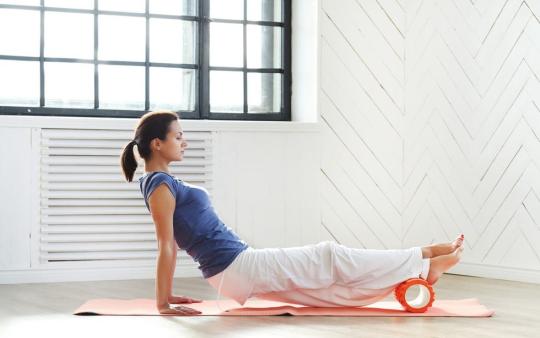A sore back, strained neck, or tender muscles after a vigorous workout can really put a damper on things. But pain doesn’t have to get in your way! Having a few tricks in your pain relief toolkit means you can ease some of that discomfort at home and get back to enjoying your day.
Breathe Deeply
Breath work and diaphragmatic breathing (breathing into the belly, not the chest) may reduce neck and lower back pain, alleviate headaches, reduce inflammation and pain sensitivity, and improve core strength. Likewise, meditation may help to rewire pain pathways in the brain, allowing you to focus on less painful thoughts or sensations. Breath work also works well for relieving feelings of fear or anxiety, and reducing stress. Not sure where to start? Use a free app (I use Insight Timer) and consider adding a guided meditation to your routine.
On a Roll
A foam roller can be a great tool for pain relief. Great for larger muscle groups like the glutes, quads, hamstrings, and calves, a foam roller can also be used to massage out areas of tension or tight muscles, as well as trigger points (knots) in the muscles. Foam rollers can also be a great tool to improve joint mobility, especially the upper and mid back. The key to success when foam rolling is to use light pressure, as pressing too hard can cause damage and more pain—while it’s normal for the rolling to feel a bit uncomfortable, it should never feel painful. Choose a foam roller that is stippled, rather than completely smooth.
Have a Ball
Massage balls are great for addressing those smaller areas where the foam roller can’t reach, like behind the neck, hip flexors, glutes, and pecs. They come in different sizes, textures, and firmness, depending on your need and the desired effects. If you’re new to massage balls, go for a smooth ball, and remember, as with foam rollers, some discomfort when using the ball is normal, but pain is not!
Major in Movement
Movement is a great way to ensure your body stays limber, and having the right equipment on hand is key to avoiding injury and pain. While you don’t need to purchase anything specific to get movement into your daily routine, a good quality pair of running shoes with adequate support and a yoga mat made of thick, natural rubber, which offers comfort to the hands and knees, may help make your efforts more enjoyable. Keep in mind that adding weights or resistance bands to your workout is not advised until you have mastered your form, as increasing weight and resistance before you are ready may lead to more pain.

Post-Workout Wonders
After a good workout, I love to grab my foam roller or massage balls for an active cool down. They’re also great tool to use on an active rest day, or when my muscles are feeling a little too tight. Sometimes reaching for some topicals can also be of great support.
Flex your muscle Muscle creams can be a great stand-alone pain relief tool, or may be used after your movement or workout. Not all muscle creams are created the same, with some designed to decrease pain, some to reduce inflammation to the applied area, and some may even help with the repair process. Further, it’s important to consider what ingredients you’re putting on your skin, and to avoid skin irritants and toxins. When choosing a muscle cream it’s best to speak to your healthcare provider to determine which is the right one for you.
Hot stuff Heat can temporarily increase blood flow and circulation while improving healing, reducing muscle tightness and tension, and in some cases relieving pain. Heat works best in dealing with dull achy pain or stiffness and tension. It should not be applied for more than 15-20 minutes at a time, and the skin should be allow to return to room temperature before reapplication of heat or application of ice.
Cool off Ice can temporarily decrease inflammation and swelling, as well as temporarily numb pain. Good for sharp pain and swelling, but note that ice should not be applied for longer than 10-15 minutes at a time.
Speak to your healthcare provider before using ice or heat, especially if you have an inflammatory condition, diabetes, are pregnant, have a vascular condition, or are experiencing loss of sensation.
If the above measures don’t improve your symptoms, visit your chiropractor or healthcare provider.
You may also enjoy: Reducing Systemic Inflammation and Chronic Pain, All the Ways a Chiropractor Can Benefit Your Health, and Managing Pelvic Girdle Pain Naturally.









